
SDG 13: Climate action
To combat climate change and its impacts, HKUST recognizes the urgent need to mitigate greenhouse gas emissions, adapt to changing climate patterns, and build resilience. Under HKUST’s 2028 Sustainability Challenge we set out the operational strategies and tactics to reduce our greenhouse gas emissions with the goal of reaching net-zero emissions by 2050. We also recognize that the solutions we need to reach this ambitious goal may be in the early stages of development and are committed to funding and supporting innovative climate action research.
Curriculum
97 related courses were offered in the 2023-24 academic year.
Research
According to Science Direct, from 2020 to 2023, HKUST published 512 research papers addressing SDG 13.
31.64% of them are in the top 10% cite score and 72.5% are internationally co-authored.
Research Highlights
HKUST Researchers Report the High-res Structure of a Cyanobacterial Virus Paving the Way for More Accurate Predictions of Climate Change
A research team at the Hong Kong University of Science and Technology (HKUST) has outlined the high-resolution structure of a virus, improving our understanding of viral infection, which could pave the way for more accurate predictions of climate change. With the help of an advanced technique involving cryo-electron microscopy, they managed to capture images of the virus – the cyanophage P-SCSP1u – at near-atomic resolution in its native form and examined it to see how its different parts fit together. This helped show how different proteins work in the virus and how they interact to make the virus stable and able to infect cells. Studying the infection process of cyanophages is important for understanding how they regulate cyanobacterial populations, which is crucial for the accurate estimation of the global carbon budget and for the prediction of climate change.

The overall architecture of the P-SCSP1u virion.
HKUST Collaborative Research Predicts Hot Nights to Increase by 50% in 2040s And Extreme Rainfall to Increase by Over 40%
A groundbreaking study by HKUST, CUHK, and HKU reveals alarming projections for Hong Kong's climate future, forecasting a 50% increase in hot nights (≥28°C) and over 40% higher extreme rainfall by the 2040s. The interdisciplinary research team combined advanced weather modelling with urban heat island analysis to identify high-risk districts like Sha Tin and Kowloon, while warning of heightened threats from heatwaves (particularly to elderly health) and unprecedented rainfall (up to 230mm/hour) that could trigger landslides and flooding. By translating scientific findings into actionable strategies, the partnership demonstrates how academic institutions can drive evidence-based climate adaptation while calling for collective emission reductions to mitigate long-term impacts.
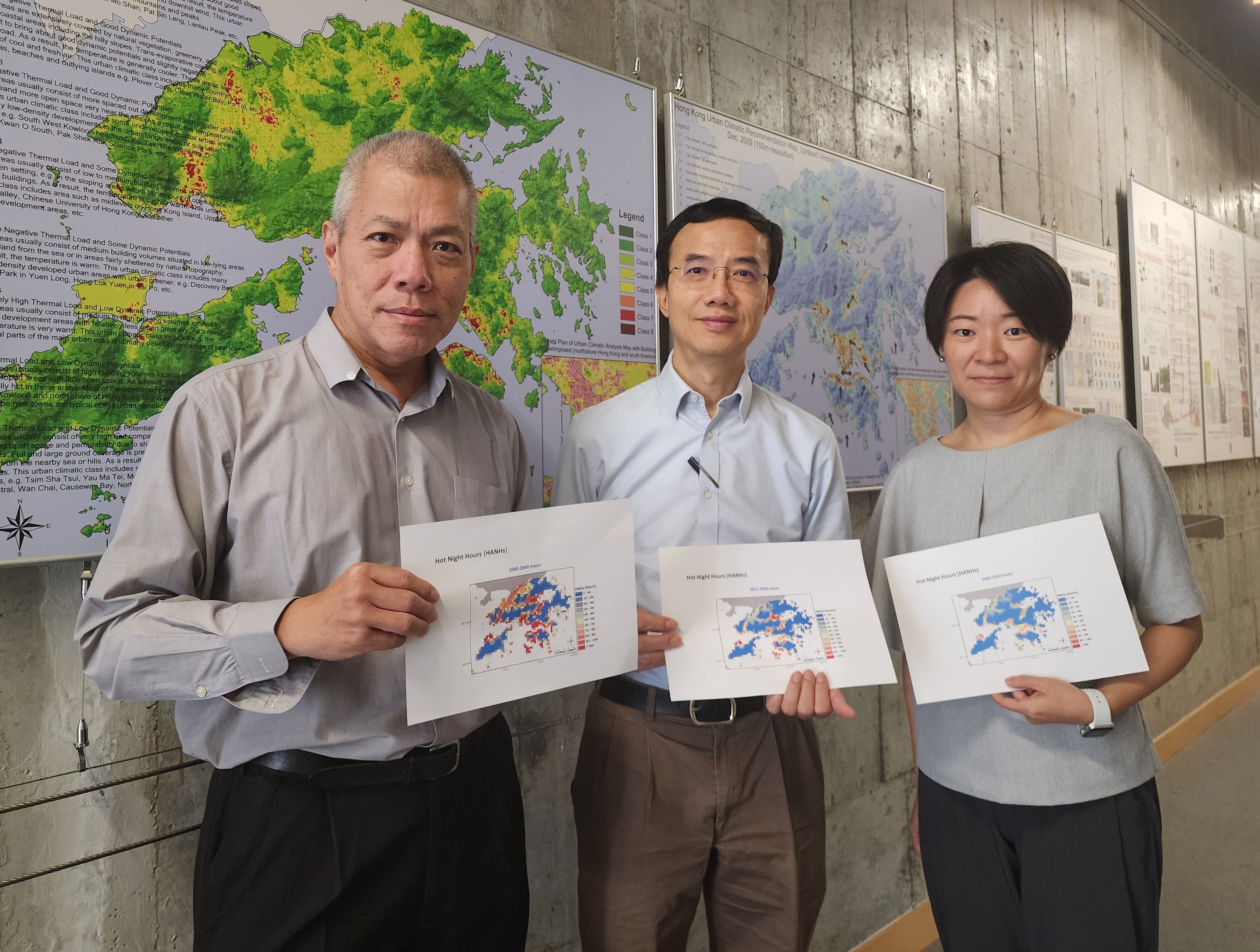
Research team: Prof. Jimmy FUNG Chi-Hung, Chair Prof. in the Department of Mathematics and the Division of Environment and Sustainability at HKUST (middle); Prof. Edward NG Yan-Yung, the project leader from School of Architecture at CUHK (left); and Dr. REN Chao, Assoc. Prof. in the Faculty of Architecture at HKU (right).
New Measurements Developed by Prof. Jian Zhen YU’s Research Team Reveal a Significant Contribution of Nitrogenous Molecules to Ambient Organic Aerosol
HKUST Research Team led by Prof. Jian Zhen YU has developed a novel measurement that permits simple, and yet sensitive, simultaneous detection of inorganic and organic nitrogen. The team applied the new method and quantified ON in more than 600 aerosol filter samples collected from multiple sites of varying urban influence in China and spanning a whole year at most sites. The data showed that annual average ON concentration was in the range of 0.4–1.4 μg N m−3, representing 17–31% of aerosol total nitrogen. The results provide the quantitative data on the extent of presence of organic nitrogenous aerosol and the origin of their major sources. It’s anticipated that this data will bring forth a breakthrough in our ability to describe and model organic aerosols and to assess their environmental impacts, such as atmospheric nitrogen nutrient inputs to ecosystems.
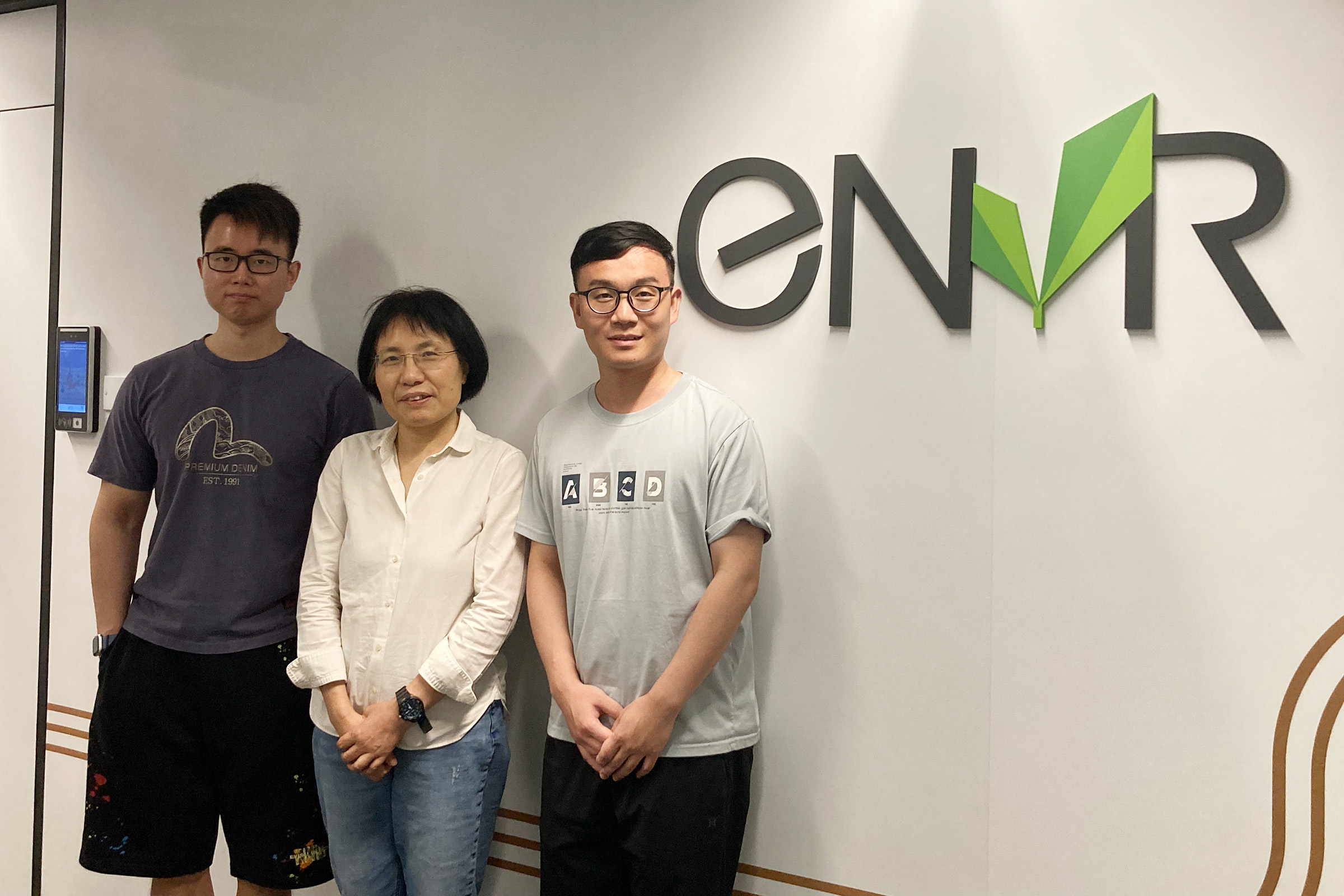
HKUST authors on the paper: Dr. Kezheng LIAO (left), Prof. Jian Zhen YU (center), Dr. Xu YU (right) and ENVR research postgraduate students Yumin LI.
HKUST Researchers Develop AI-enabled Model to Help Mitigate Global Ammonia Emissions from Cropland by 38%.
Research team led by Prof. Jimmy FUNG Chi-Hung, Chair Professor of HKUST’s Division of Environment and Sustainability in the Academy of Interdisciplinary Studies and Department of Mathematics, and Prof. ZHENG Yi from the School of Environmental Science and Engineering at the Southern University of Science and Technology (SUSTech), has developed an innovative AI-powered model to address global ammonia (NH3) emissions around the world. The team trained an AI-powered computer model to estimate global NH3 emissions while incorporating critical geographical and environmental factors. This cutting-edge tool not only identifies emission hotspots but also generates customized fertilizer management plans for different regions that will ultimately reduce NH3 emissions due to the influence of global warming. This innovation promotes sustainable agriculture while protecting biodiversity and soil health.
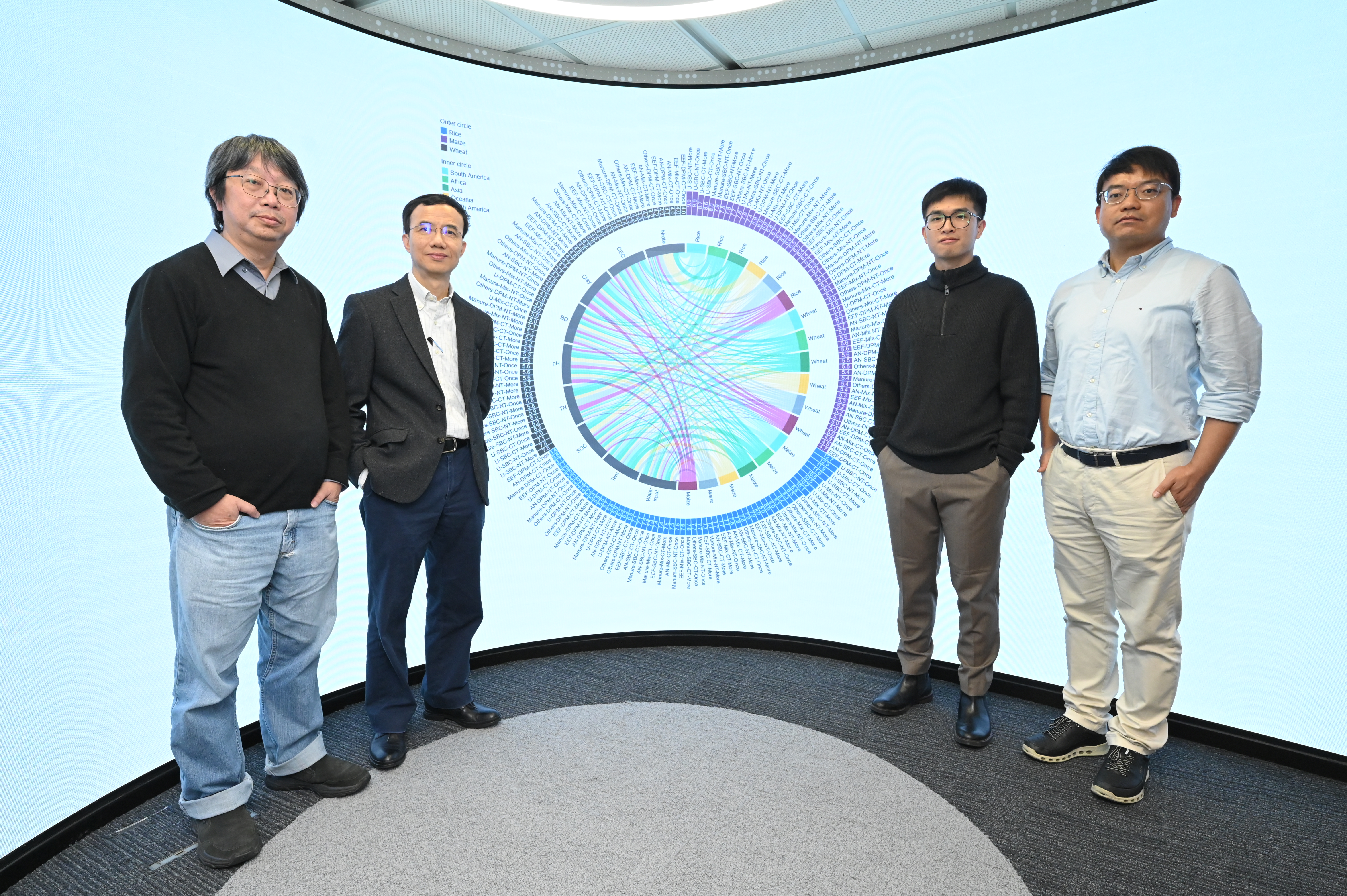
Digital Twin-empowered Landslide Emergency Risk Management
Amid the increasing frequency and intensity of extreme rainstorms under climate change and the enduring landslide activities triggered by strong earthquakes, new landslide emergency risk management theories and technologies are urgently needed to ensure public safety and sustainable development. To address the pressing issue, Prof. Zhang Limin’s project is set to (1) develop a digital twin of Hong Kong for sensing, simulating, and visualizing landslide hazard processes and for coordinating societal responses, and (2) create a new paradigm for managing hazard emergency risks in the digital era.
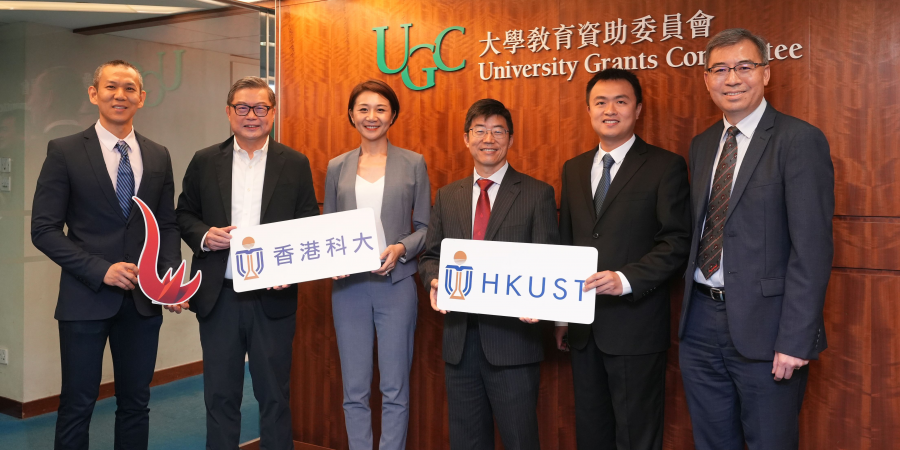
HKUST Researchers Find Strategic Emission Caps Key to Ammonia Industry Decarbonization
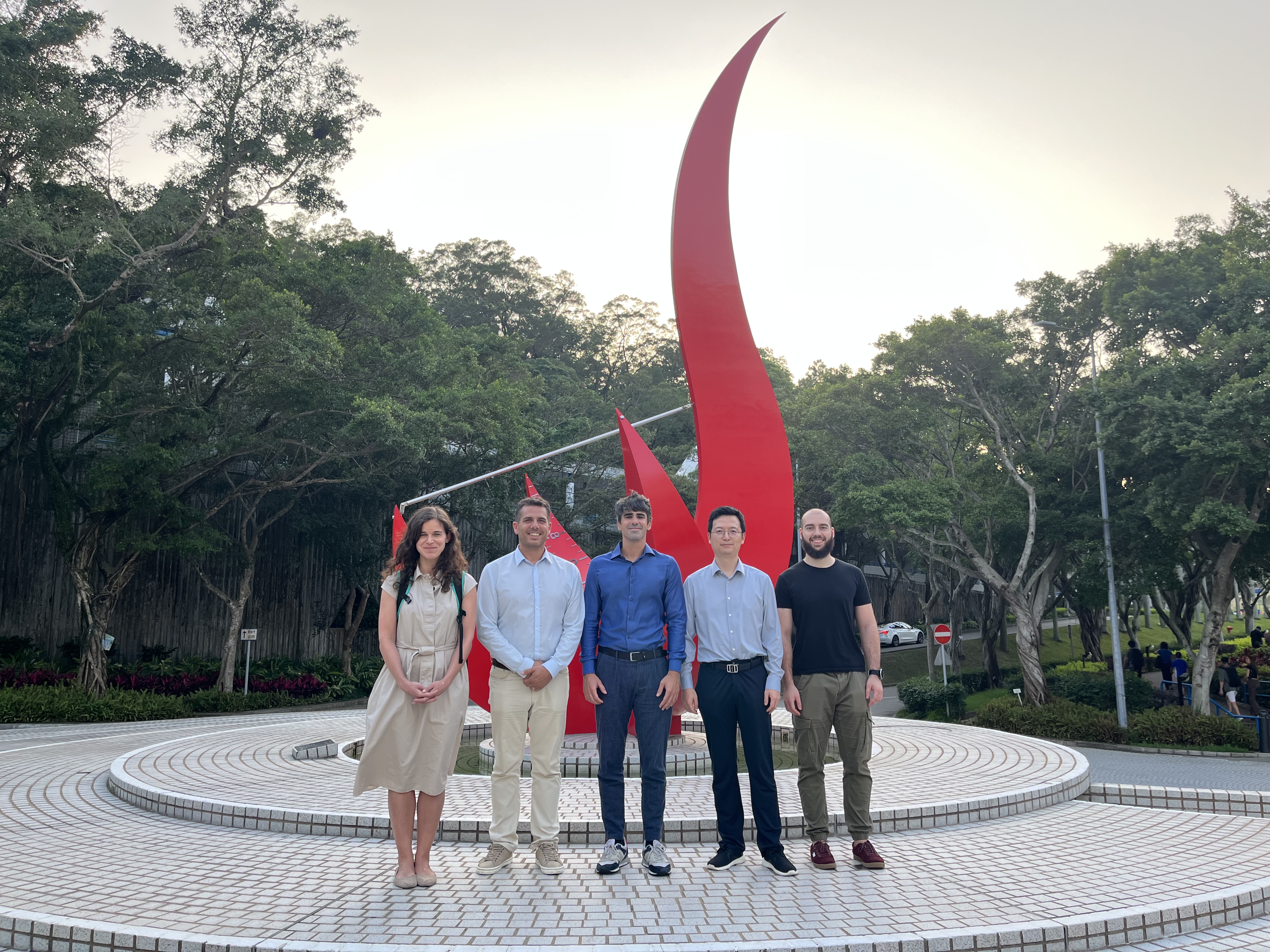
New Measurements Developed by Prof. Jian Zhen YU’s Research Team Reveal a Significant Contribution of Nitrogenous Molecules to Ambient Organic Aerosol
The research provide the quantitative data on the extent of presence of organic nitrogenous aerosol and the origin of their major sources. It’s anticipated that this data will bring forth a breakthrough in our ability to describe and model organic aerosols and to assess their environmental impacts, such as atmospheric nitrogen nutrient inputs to ecosystems.
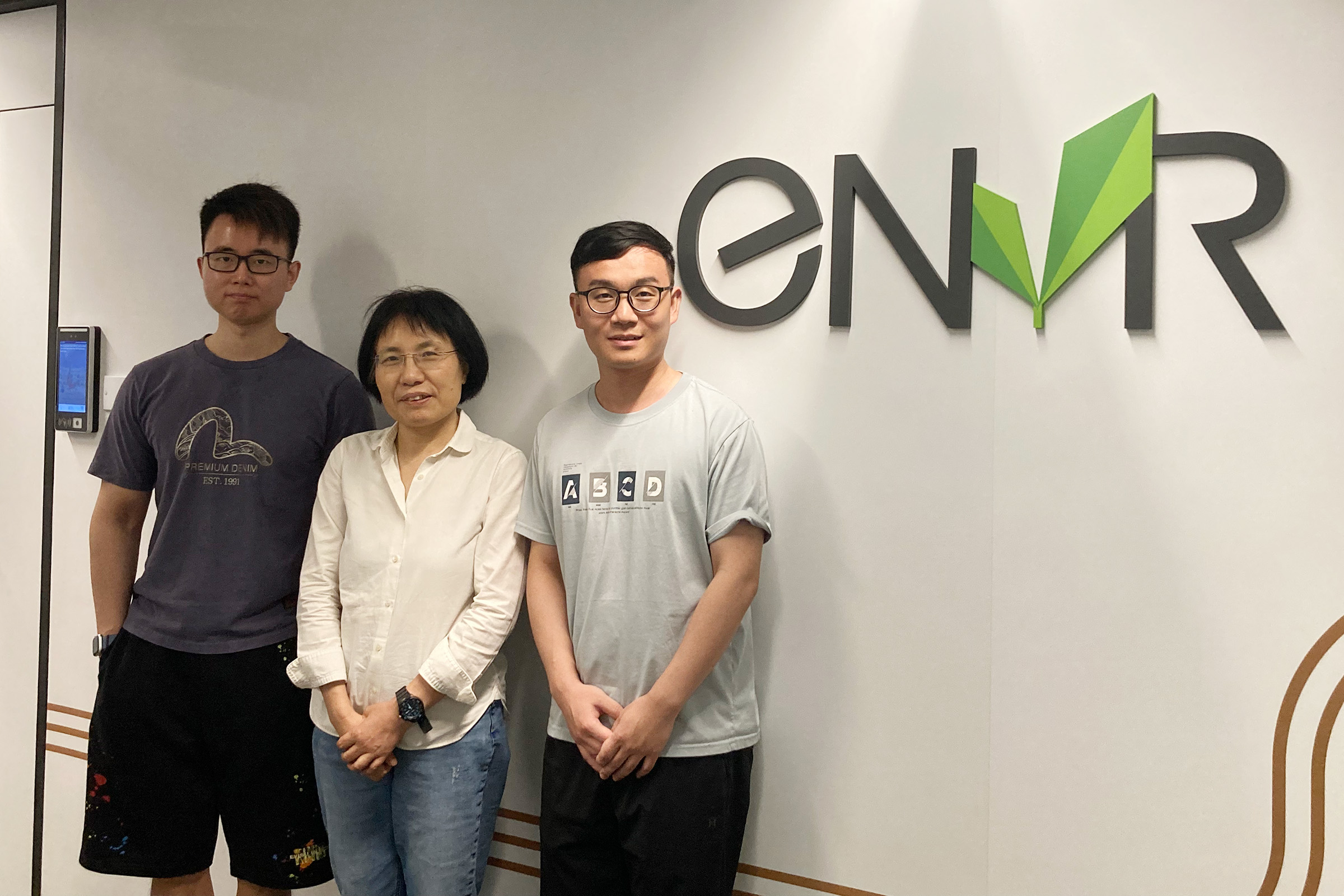
Low-Carbon Elastocaloric Fridges and Air Conditioners for Sustainable and Smart HKUST
The Low-Carbon Elastocaloric Fridges and Air Conditioners for Sustainable and Smart HKUST project introduces the solid-state elastocaloric refrigeration technology to harness the potential of phase-transition shape memory alloys, offering a zero-GHG-refrigerant alternative that is fully recyclable. By eliminating the use of greenhouse gas refrigerants, this technology significantly reduces carbon emissions while maintaining exceptional cooling power and efficiency.
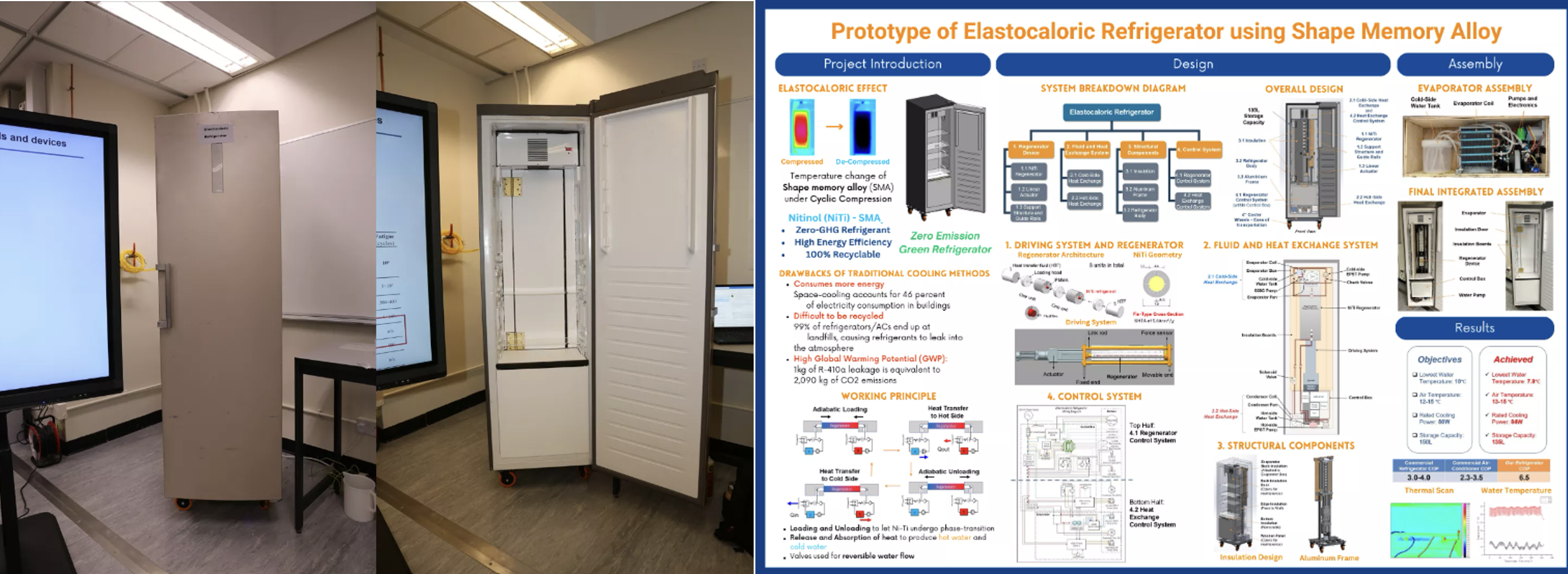
Innovations in cooling technology: Low-carbon elastocaloric device, a Sustainable Smart Campus as a Living Lab project
Facade Integrated Photovoltaic
By strategically deploying tailored colored Façade Integrated Photovoltaic (FIPV) systems, solar ray from more directions can be more effectively captured by the PV solar panels, generating electricity at a higher rate. Incorporating passive cooling solutions will also provide a better indoor climate while being estimated to reduce 30 tons of CO2 emissions annually, bringing us a step closer to innovative climate action.
Policy
HKUST Net-Zero Action Plan
Following extensive consultations, HKUST's Action Plan is the first comprehensive net-zero blueprint released by a higher education institution in Hong Kong. It sets ambitious targets for greenhouse gas (GHG) reductions, aiming for a 50% decrease by 2035 and full net-zero by 2045. This plan builds upon the university's previous success, having already reduced GHG emissions by 34% since the launch of its first sustainability master plan in 2014.
HKUST Net-Zero Building Standard
HKUST is committed to improving the energy efficiency of its new buildings as well as renovation projects through the implementation of newly updated HKUST Net-Zero Building Standards. The requirements outlined include anticipating future energy needs, maximizing metering and monitoring capabilities while keeping a flexible design to accommodate for future new sustainable technologies.
HKUST ESG Investment Policy
HKUST has also published the ESG Investment Policy, in which the Net-Zero Carbon Investment Strategy is included. It was stated that HKUST will ensure its investment approach is consistent with the scientific
consensus on climate change and the goals of the Paris Agreement, as operationalized by the Science-Based Targets (SBT) initiative. The measurements and concrete strategies are stated as well.
Collaboration
GHG Emissions Calculator and Estimator
The GHG Emissions Calculator and Estimator, a collaborative effort between HKUST and the Green and Sustainable Finance Cross-Agency Steering Group (co-chaired by the Hong Kong Monetary Authority and the Securities and Futures Commission), supports Hong Kong government's sustainability goals. This free, publicly available tool empowers small and medium-sized enterprises (SMEs) to measure and report their greenhouse gas emissions for ESG reporting. By offering user-friendly tools tailored to Hong Kong's market needs, HKUST tackles the challenges SMEs face in sustainability reporting. This initiative fosters environmental responsibility and transparency within the private sector, enhances the availability of reliable sustainability data, and facilitates informed decision-making—aligning with broader decarbonization efforts for a more sustainable future.
Young Environment Ambassador program Collaboration with Civic Exchange
The Young Environment Ambassador (YEA) program, organized by Civic Exchange in collaboration with HKUST’s Division of Environment and Sustainability and The Nature Conservancy, empowered Hong Kong’s youth to drive sustainable change. During a site visit to HKUST, participants explored the university’s central cooling system, which uses energy-efficient heat pumps and eco-friendly refrigerants, and learned about personal carbon footprints in a workshop. They also engaged with HKUST’s Smart Sustainable Campus initiatives, including AI food waste monitoring, aquaponics, and solar panels, as part of the Sustainable Smart Campus as a Living Lab program. This partnership combined educational resources, NGO expertise, and real-world examples to inspire youth as climate leaders and agents of positive change.
University Alliances
HKUST actively participates in several university alliances focused on addressing climate change. As a member of the International Sustainable Campus Network (ISCN), HKUST collaborates with universities around the world to implement sustainability best practices that reduce emissions and build resilience. The university also contributes to the Sustainable Development Solutions Network (SDSN)'s climate research and initiatives.
Joint Declaration on Embracing a Living Lab Approach to Promote Carbon Neutrality
The Joint Declaration on Embracing a Living Lab Approach to Promote Carbon Neutrality, spearheaded by HKUST, unites universities globally to combat climate change and secure a sustainable future for all. Acknowledging universities' pivotal role in research and innovation to mitigate climate impacts, we commit to advancing carbon-neutral solutions through our campuses as "living labs." This commitment includes upholding UN Sustainable Development Goal 13, fostering hands-on research and learning, nurturing partnerships for campus-based innovation, sharing best practices, and driving research to reduce greenhouse gas emissions from campus operations.
Community Engagement
CARE 2024 Conference: Surviving the Heat
The two-day CARE2024 Conference, complemented by a half-day public forum, united international experts to explore the latest developments in climate change and extreme heat, their societal impacts, and innovative adaptation strategies. This comprehensive event tackled crucial issues including public health, urban planning, and the needs of vulnerable populations. By bringing together participants from academia, business, and government sectors, the conference highlighted the intricate connections between climate resilience, health, and sustainable urban development. This collaborative effort nurtured vital partnerships for developing effective climate adaptation strategies, particularly for rapidly urbanizing regions like Hong Kong and the Greater Bay Area.